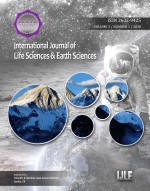Didactic material for preparation observation and estimation content on subject recreational activities in nature
Keywords:
brochure, educational material, estimation, learning, observationAbstract
Providing alternative answers to the problem of learning quality is a fundamental concern for educators engaged in the task of promoting personal growth in the teaching-learning process. The research presented refers to the inadequacies in the theoretical-practical preparation in the content of the observation and estimation in the subject Recreational Activities in Nature in fourth-year students of the Physical Culture career. In this sense, the objective was to elaborate a didactic material (Brochure) that provides the development of theoretical and practical preparation in the content of observation and estimation. The methodology that was used as a theoretical method was the analysis-synthesis, inductive - deductive, review of documents and as an empirical method the observation and criteria of specialists; As techniques, the interview, survey, and the statistical-mathematical procedure were used as a percentage calculation, which allowed us to know the theoretical and practical inconsistencies that led to the need to treat the problem under investigation.
Downloads
References
Alava, E. E., & Martinez, M. E. M. (2019). Impact of teaching-learning process for brain. International Journal of Health Sciences, 3(1), 33-40. https://doi.org/10.29332/ijhs.v3n1.304
Álvarez, C. G. (2000). Economía y política petrolera. Indepaz.
Ben-Akiva, M., & Morikawa, T. (1990). Estimation of switching models from revealed preferences and stated intentions. Transportation Research Part A: General, 24(6), 485-495. https://doi.org/10.1016/0191-2607(90)90037-7
Castañeda, AE (2013). Pedagogy, digital technologies and information and knowledge management in engineering education. Havana: Editorial Félix Varela.
Castro, VG (1990). Cuban dictionary of teaching aids and related terms. People and Education.
Corless, M., & Tu, J. A. Y. (1998). State and input estimation for a class of uncertain systems. Automatica, 34(6), 757-764. https://doi.org/10.1016/S0005-1098(98)00013-2
Cubero, C. A. (2010).Picturing Transnationalism: Towards a cinematic logic of transnationalism Suomen Antropologi: Journal of the Finnish Anthropological Society Volume 35(4), 26-34.
Kindelan, K. (2007). Methodological alternatives for teaching the Orientation Degree. (Diploma work not published). Santiago de Cuba, Cuba: ISCF "Manuel Fajardo".
Kirschner, P. A. (2001). Using integrated electronic environments for collaborative teaching/learning. Learning and Instruction, 10, 1-9. https://doi.org/10.1016/S0959-4752(00)00021-9
LaBarre, L. (1991). OSI Internet Management: Management Information Base. Network Working Group RFC, 1214.
Labarrere, A. (1996). Intelligence and creativity at school. Education Magazine , 88 , 20-25.
Lewalter, D. (2003). Cognitive strategies for learning from static and dynamic visuals. Learning and Instruction, 13(2), 177-189. https://doi.org/10.1016/S0959-4752(02)00019-1
López-Íñiguez, G., & Pozo, J. I. (2014). Like teacher, like student? Conceptions of children from traditional and constructive teachers regarding the teaching and learning of string instruments. Cognition and Instruction, 32(3), 219-252. https://doi.org/10.1080/07370008.2014.918132
Macías, E. I. P., Cedeño, H. A. C., & Chávez, G. M. R. (2018). Importance of Improving Resilience in Teaching-Learning Process of Students with Disabilities. International Research Journal of Management, IT and Social Sciences, 5(2), 120-128.
McMahon, R. J., & Forehand, R. (1978). Nonprescription behavior therapy: Effectiveness of a brochure in teaching mothers to correct their children's inappropriate mealtime behaviors. Behavior Therapy, 9(5), 814-820. https://doi.org/10.1016/S0005-7894(78)80012-4
Mosquera, A. (2009). Lotman's semiotics as a theory of knowledge. Enl @ ce: Venezuelan Magazine of Information, Technology and Knowledge, 6 (3), 63-78.
Padilla, D (2013). Orientation Career teaching materials for fourth year students. Diploma work in option to the Bachelor's Degree in Physical Culture not published. Santiago de Cuba. Cuba.
Paredes, M. C. (2011). Parent involvement as an instructional strategy: Academic parent-teacher teams (Doctoral dissertation, Arizona State University).
Pavlov, B. S. (1979). Basicity of an exponential system and Muckenhoupt's condition. In Doklady Akademii Nauk (Vol. 247, No. 1, pp. 37-40). Russian Academy of Sciences.
Roco, M. C. (1996). Multiphase flow: summary paper. Powder technology, 88(3), 275-284. https://doi.org/10.1016/S0032-5910(96)03131-2
Rosabal, D., & Aragón, G. (2010). Epiphytic lichens in the coastal scrub of the Siboney-Juticí Ecological Reserve (Cuba). Botanica Complutensis, 34 , 21.
Sánchez Ramírez, LC (2009). ICT in the dynamics of the training process for scientific research in Higher Education [doctoral thesis]. Santiago de Cuba: University of Oriente.
Sánchez Rodríguez, J. (2009). Virtual teaching platforms for educational environments.
Valdés, G. (1998). The world outside and inside schools: Language and immigrant children. Educational researcher, 27(6), 4-18. https://doi.org/10.3102%2F0013189X027006004
Published
How to Cite
Issue
Section
Articles published in the International Journal of Life sciences & Earth sciences (IJLE) are available under Creative Commons Attribution Non-Commercial No Derivatives Licence (CC BY-NC-ND 4.0). Authors retain copyright in their work and grant IJLE right of first publication under CC BY-NC-ND 4.0. Users have the right to read, download, copy, distribute, print, search, or link to the full texts of articles in this journal, and to use them for any other lawful purpose.
Articles published in IJLE can be copied, communicated and shared in their published form for non-commercial purposes provided full attribution is given to the author and the journal. Authors are able to enter into separate, additional contractual arrangements for the non-exclusive distribution of the journal's published version of the work (e.g., post it to an institutional repository or publish it in a book), with an acknowledgment of its initial publication in this journal.















